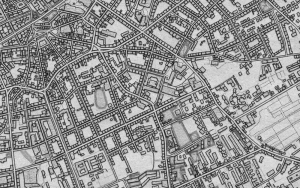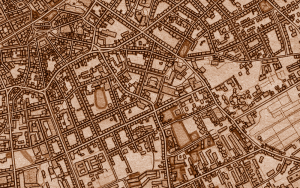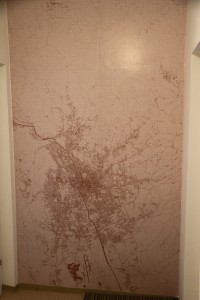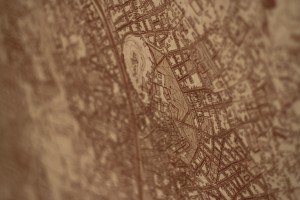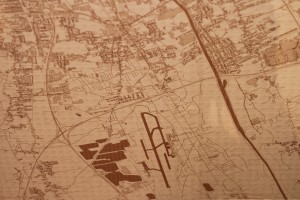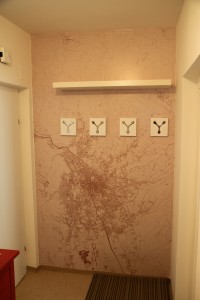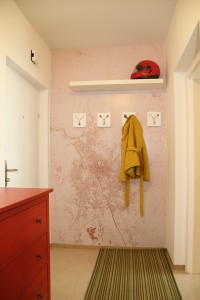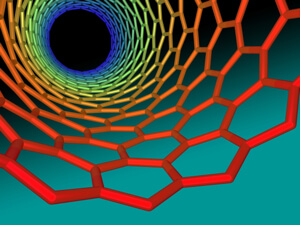Normally, I use my blog as a soap-box for spouting complex opinions. Twitter, with its 140 character limit, is very constrained: it's almost impossible to express long, nuanced opinions. But sometimes it's necessary to eat your own dog food. Here's a series of eleven tweets I posted last week, expressing a hypothesis about what's wrong with twitter today.
If your business model relies on ads for income, you require eyeballs. Easiest way to get them is to generate outrage/emotional kick. /1
Hence clickbait news sites. Hence internet rumours. Hence paranoia. Outrage draws eyeballs to ads, it's as simple as that. /2
The ad networks don't care about truth, honesty, accuracy in reporting, public discourse, or democracy. Just eyeballs and CPM. /3
Ad networks compete. They drive ad prices down b/c we only have 168 hours/person/week to look at them. This promotes escalation. /4
Trying to build a business on ad revenue is like building on quicksand. FB and Twitter are huge; have to keep growing or die. /5
So FB/Twitter are driven to escalate, become more addictive, push the dopamine reward button harder all the time, to keep selling ads. /6
Traditional TV/newspaper news didn't continually escalate emotional engagement b/c ad space was a rivalrous resource; barriers to entry /7
... were steep. New media know they can be killed and eaten in months by upstarts. So the competition to be the most addictive is fierce. /8
Solution? Global ban on ad-supported social media. Instead, micropayment architecture funded via ISP subscriptions. Unfortunately ... /9
That's not what we've got. It's the phone system (you pay your provider for access) but the web was free to push growth in early days. /10
And it may be too late to re-engineer the web so that it doesn't destroy democracy and promote politics of hate on a global scale. END /11
So here's my question for the blog discussion: what is to be done?
(Point of clarification on tweets 9-10: the phone system effectively runs on micro-billing, with costs for services passed on to the end-user eventually, either by being bundled up in a line rental fee or by being charged per unit consumed. But the internet was originally a corporate/academic system where commercial use was actually forbidden (I'm thinking back to NSFNet and ARPANet days). And as the web was built out from about 1993 onwards, everyone agreed to make the new internet free but for infrastructure fees (the line rental on your DSL modem), and that services provided over the internet should be funded on a per-service basis by subscription or advertising. So there's no universal micro-billing mechanism in place.)
Just as the USB port on your phone can serve as a serial connection, mass storage device, and a network connection, the Pi Zero can do the same. We’ve seen a few people turn the Zero into a single USB gadget, but what about turning the Zero into a USB HID device, network connection, and serial port all at the same time? That’s what [Tobias] did, and his method is even easier than the old one.
The old method of turning the Pi Zero into a USB device required the user to modify and recompile the kernel. Obviously, this isn’t an ideal solution. [Tobias]’ implementation fixes this by putting everything into userland. Everything is configurable through a script and a few tweaks to how the Pi starts up.
The result is a Raspberry Pi Zero that will appear as any USB peripheral. [Tobias] goes through the usual examples: setting the Pi up as a serial device for hacking and code cracking in a terminal, as an Ethernet device to give the Pi Zero networking capabilities, as a keyboard to send keypresses to another computer, and as a mass storage device so that other computers can read a small portion of the Pi’s SD card.
There are plenty more USB gadgets the Pi can emulate, from printers to audio devices to MIDI adapters to webcams. If you can wrap your head around what a Pi Zero could do when configured as one of these devices, drop a note in the comments.
Filed under: Raspberry Pi
We wanted to paint one wall in our vestibule to add a little more color to the room. As we could not settle on a specific color, I thought of wallpaper. And is there any better theme than OpenStreetMap Data¹? Data?
The theme was settled. It had to be a map, but which tiles? I thought of the beautiful pencil drawn MapBox tiles I saw some time ago:
We wanted some redish color so I had to convert the image with ImageMagick:
$ ./colorize.sh 25 file_in.png file_out.png
$ cat colorize.sh
#!/bin/bash # I found this script in the imagemagick formus: # http://www.imagemagick.org/discourse-server/viewtopic.php?t=17460#p91820somewhere on the web. Don't know where anymore.# It does about the same as gimp with the colorize option. test -z $1 && exit -1 hue=$1 sat=50 light=0 hue=`convert xc: -format "%[fx:100*$hue/360]" info:` sat=`convert xc: -format "%[fx:2*$sat]" info:` test=`convert xc: -format "%[fx:$light<0?0:1]" info:` light=`convert xc: -format "%[fx:abs($light)]" info:` if [ $test -eq 0 ]; then fillcolor="black" else fillcolor="white" fi convert \ $2 -set colorspace RGB -colorspace gray -set colorspace sRGB \ -fill "hsl($hue%,100%,50%)" -tint 40% \ -modulate 100,$sat,100 \ -fill $fillcolor -colorize $light% $3
the result is something like this:
I crawled more™ tiles with the OpenstreetMap Bigmap script, but changed the source to MapBox’s servers for their pencil drawn tiles:
#!/usr/bin/perl # generated from http://openstreetmap.gryph.de/bigmap.cgi/ # permalink for this map: http://openstreetmap.gryph.de/bigmap.cgi?xmin=71104&xmax=71231&ymin=45952&ymax=46143&zoom=17&scale=256&baseurl=http%3A%2F%2Ftile.openstreetmap.org%2F!z%2F!x%2F!y.png # use strict; use LWP; use GD; my $img = GD::Image->new(32768, 49152, 1); my $white = $img->colorAllocate(248,248,248); $img->filledRectangle(0,0,32768,49152,$white); my $ua = LWP::UserAgent->new(); $ua->env_proxy; for (my $x=0;$x<128;$x++) { for (my $y=0;$y<192;$y++) { my $xx = $x + 71104; my $yy = $y + 45952; # changed the path here: foreach my $base(split(/\|/, "https://c.tiles.mapbox.com/v3/examples.a4c252ab/17/!x/!y.png")) { my $url = $base; $url =~ s/!x/$xx/g; $url =~ s/!y/$yy/g; print STDERR "$url... "; my $resp = $ua->get($url); print STDERR $resp->status_line; print STDERR "\n"; next unless $resp->is_success; my $tile = GD::Image->new($resp->content); next if ($tile->width == 1); if ($base =~ /seamark/) { my $black=$tile->colorClosest(0,0,0); $tile->transparent($black); } $img->copy($tile, $x*256,$y*256,0,0,256,256); } } } binmode STDOUT; print $img->png(); Finally I had a 32,768 x 49,152 pixel PNG file with 324 MB. Scaling it the first time on my laptop took 8 hours. To colorize it the right way I found myself a machine with a little more ram. The final file was 20,110 x 35,000 pixels with a possible resolution of 340 dpi. It almost killed the windows machine at the copyshop but the results were really nice.
Jack Andraka is 16 years old, a sophomore in high school, and a pretty endearing chap. Andraka’s alter ego? Mad scientist. Last year, Andraka developed a very cheap, accurate diagnostic test for pancreatic cancer using antibodies, carbon nanotubes—and research from Google. Andraka’s work went on to win the Intel International Science and Engineering Fair, and at FutureMed 2013, his rapid-fire fifteen minute talk earned a standing ovation. Singularity Hub chatted with Andraka right after his presentation:
Andraka didn’t set out to solve an intractable problem in oncology. But he’s a very bright young man with a curious intellect. And when his uncle and an acquaintance both died of pancreatic cancer—he couldn’t stop wondering why it was such a quick, nearly unstoppable killer.
The answer, as it turns out, is pretty simple: The harder a cancer is to diagnose early, the harder it is to combat after diagnosis. The pancreas lies deep in the abdomen between the stomach and spine. Because of its location, there are no telltale lumps a physical exam would discover and physical symptoms do not present themselves initially.
Worse, pancreatic cancer tends to rapidly spread to neighboring organs like the liver, gallbladder, and small intestine. By the time patients complain of upper abdominal pain, yellow eyes and skin, and weight loss, the cancer is quite advanced and less likely to respond to treatment. The five-year survival rate for pancreatic cancer is a dismal 5.5%.
One day sitting in his high school biology class, Andraka was reading an illicit article on carbon nanotubes used as biosensors (quite the rebel) and listening to a lecture on antibodies with half an ear. As the legend goes, that’s when a mote of inspiration hit him squarely in the neocortex—perhaps the two could be combined to detect molecular-sized cancer clues?
After a good bit of Google-powered research, Andraka sent proposals to 200 professors suggesting the use of carbon nanotubes to test for a biomarker of pancreatic cancer called mesothelin. He received 199 rejections, but one Johns Hopkins professor, Dr. Anirban Maitra, was intrigued. Andraka went on to develop his paper test for pancreatic cancer at Dr. Maitra’s lab.
Andraka’s technique laces single walled carbon nanotubes with mesothelin-specific antibodies and deposits them on a strip of paper. The nanotubes make the paper electrically conductive. He then exposes the paper to a blood sample, and when mesothelin in the blood binds with the antibodies to form larger molecules, it changes the paper strip’s electrical potential.
Measuring this change in electric potential yields an accurate estimate of the mesothelin concentration present in the sample.
Andraka says his test is “168 times faster, 26,000 times less expensive, and over 400 times more sensitive than the current standard.” It costs $0.03 per test and takes five minutes. The test could also potentially be used to diagnose ovarian and lung cancer, both of which also produce abnormal levels of mesothelin.
Andraka’s method and the story behind it have been getting a lot of attention. 60 Minutes attended FutureMed to film his talk and interview him—they were actually filming us as we recorded our short interview. (No pressure!) The Smithsonian Magazine, BBC, Forbes, and Wall Street Journal have all covered his work.
And it’s small wonder. Andraka’s story is extraordinary. His technique is exemplary of a larger movement afoot—from late diagnosis of disease by physical symptoms to early diagnosis at the molecular level. Biomarker tests like Andraka’s could have a huge positive impact on research, treatment, and survival rates in the coming years.
Further, information that was once restricted to a tiny subset of the population is now abundantly available online. Today, more minds than ever have access to more information than ever—an explosive combination that may bring breakthroughs like Andraka’s at an ever-quickening pace in the future.
Image Credit: Deborah Huber Photography; Geoff Hutchison, Flickr

